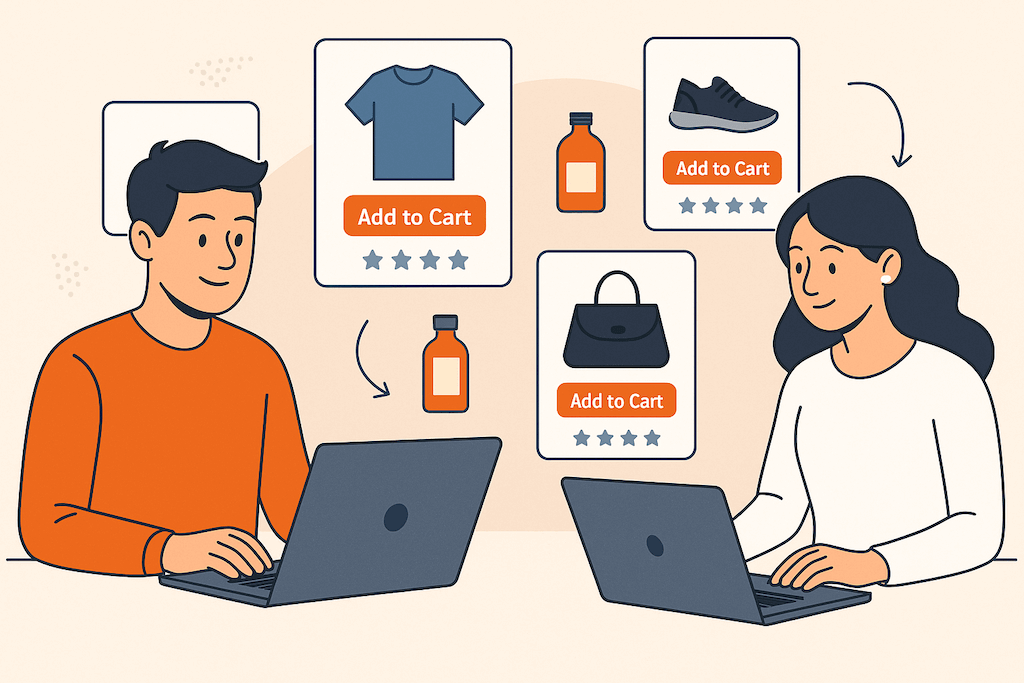In today’s world, the revival of eCommerce is happening right in front of us. Digitally native and high-tech brands are testing out voice commands and boosted reality-enabled offline-to-online experiences. With PWA (progressive web applications) and headless eCommerce, steadily the world is evolving into a storefront as businesses implement eCommerce via live streaming, video games, and smart mirrors.
The shopping malls, that were once considered second and third tier, are being given a new lifeline as observational destinations with water slides, ski hills, and theme parks. CPG companies and legacy manufacturers are reviving themselves through selling DTC (direct-to-consumer) to quicken their growth.
It is estimated that around twelve-thousand retail locations were expected to shut down last year but don’t let these numbers fool you — whatever brick and mortar is shutting down it is going online, and what was already online is immensely spreading all over the physical world.
There is no doubt in the fact that eCommerce is being raised from the dead offline, online, and everywhere in between. Truly, the future looks extraordinarily bright. Here’s how the following trends are shaping the future of eCommerce:
eCcommerce Cool the Growth
While the line among the digital and physical commerce is thinning, the substantial difference in eCommerce and retail’s growth trajectories is still stark. In 2019, the global market of retail was likely to yield USD 25 trillion, but the growth is not as staggering as the past 5 years. Although, eCommerce sales worldwide climbed up to USD 3.5 trillion, an 18% increase from the previous year.
In the future, it is estimated that e-commerce might nearly double by the year 2023 and go as high as $6.5 billion. Whereas eCommerce is expanding faster than ever, in comparison it’s just a tiny piece of the pie.
Direct to Consumer Approach Increases Growth
As more brands, manufacturers, and businesses are steadily selling direct-to-consumer and crossing retail partners, it is estimated that around 16% of the overall retail sales will happen in the ongoing year.
There are 2 essential advantages of selling directly:
- Usage and gathering of customer data
One great benefit of selling directly is that it enables you to gather first-party data which could be used further on to enhance the customer’s experience, which then leads to monetizing the relationship. - No need to rely on anyone
You no longer have to depend on your partners in retail to promote and protect your brand in a direct customer relationship. DTC also provides you an opportunity to offer support even after the sale is made.
Fulfillment of customer’s expectations
Increased customer demands concerning costs and shipping speed are completely changing the outlook of retail. Analysts have predicted that at the end of 2020, around sixty-five percent of the retails will take a step forward and offer same-day delivery. This is becoming a norm since the majority of the customers and potential buyers stated that they avoid digital shipping because of two things: Delay in shipping and cost of shipping.
To match the expectations of a customer, costs linked with quicker shipping are rising. For example, the overall cost of Amazon’s logistics, which consist of shipping and fulfillment, is now the reason behind Amazon’s 26.5% of sales. But, Amazon released this figure before their 1-day shipping option was released. In 2018, Amazon is said to have spent a whopping $27 billion on shipping alone.
In order to defray quicker shipping costs, brands have interestingly taken an initiative to set-up free shipping thresholds, in an attempt to encourage consumers to fill up their cart a little more, which boosts AOV. Furthermore, most of the brands are starting to depend on IMS to dodge stock-outs that might delay instant fulfillment.
Voice Recognition Is the Modern Path to Buying
A recent study showed that around thirty-five percent of Americans possess a minimum of 1 smart speaker, with most of the consumers having more than one. Having read that, it’s not exactly unexpected that 25% of customers purchased through a smart speaker last year. Moreover, 3.5% of customers have also said that they purchase stuff through smart speakers regularly. Questions regarding commerce are most correctly answered by Google, Amazon, and Apple.
Although data showed how likely household items are to be bought via voice commands, purchasing clothes are almost just as likely. This clearly indicates that the modern way of purchasing is via voice.
And in order to make things more convenient for consumers, brands all over the world are enhancing search results to add snippets as almost forty-percent of voice results are pulled from search engine results, as of now. To win this war of voice search, right now, sponsored snippets are the way to go.
Conclusion
It is impossible to predict the future with precise timelines or probabilities. However, the current innovative carnage taking place in a retail pose both opportunities and threats, something these merchants have never even heard of.
It’s not necessary to grasp or jump on to every trend vying to shape 2021 and ahead. All your customers want is that you’ll meet them wherever they want and offer a wonderful and smooth customer experience no matter if it is online, via voice, or offline.
In this world, nothing is guaranteed. Although, whenever any big idea, device, or channel in commerce becomes outdated, expect something else to replace it. When the local merchants realize that they can be revived, the death of retail loses its sting.
Cultura Interactive agency is an award-winning Fort Lauderdale Website Design Studio that strives to create unique and attractive websites, and develop strategic digital online marketing campaigns for our clients.
Our team of professionals specialize in custom WooCommerce development, eCommerce Subscription websites, WooCommerce Membership, eCcommerce automation and more. Learn more about our services or contact us for a personal interview.



